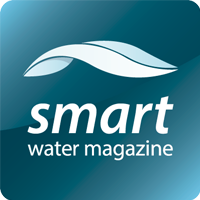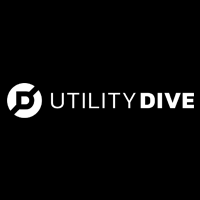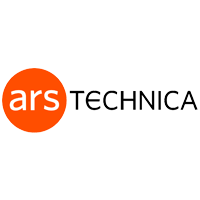Media Watch Archives
Can E.coli Be Used to Detect Heavy Metals in Water?
AZ Central -
AZoSensors speaks with Professor Regina Ragan about the development of a new water monitoring technology that utilizes the bacterium E.coli to create a live sensor. We discuss how this sensor works and why heavy metal contamination is so important to public health strategies. … Prof. Regina Ragan is a Professor in the Department of Material Science and Engineering and co-PI of the Center for Complex and Active Materials, a NSF MRSEC at UC Irvine. She has served as Equity Advisor, Inclusive Excellence Professor, and Diversity Director in Engineering Education. Read More
Mapping LA’s Flood Risk at Unprecedented Detail Reveals Hidden Risks
ESRI Blog -
One recent study of flood exposure in Los Angeles suggests that the population exposed to dangerous flooding, or a flooding event with 1 percent annual probability, is between 10 and 40 times greater than US government maps show. … The numbers of at-risk Angelenos surprised even the researchers …. said Brett Sanders, [professor and] director of the Flood Lab at the University of California, Irvine. … Already, the maps are leaving their mark on Los Angeles. Following the study’s publication, the County Board of Supervisors passed a motion directing the city’s public works department to develop a plan to address flood risks and inequities, while improving the city’s water conservation and drought measures. It’s an “impact that you could only dream of,” says Sanders, “seeing your work immediately register with leaders who say we need to act on this problem.” Read More
Light interacts with its past self in twist on double-slit experiment
New Scientist -
The famous double-slit experiment, which demonstrated that light is both a wave and a particle, has been performed using “slits in time”. The techniques involved present a new way to manipulate light that could be used to create strange materials called time crystals. … It could also help with more everyday applications, says Maxim Shcherbakov, [assistant professor, electrical engineering and computer science], at the University of California, Irvine. “The temporal interference is an exciting find that can see applications in many modern technologies but especially in telecommunications, where the way we treat signals in time is very important,” he says. Read More
The coming flood: Meet the flood watchers
Smart Water Magazine -
Using a new flood modeling and mapping method named PRIMo (Parallel Raster Inundation Model) to show in nearly house-by-house detail the impact of a 100-year flood, the study found existing assessments to be wildly inaccurate and the aging waterway control system to be woefully inadequate for coping with a massive deluge.
"We knew the paper would get some attention because we're saying that the number of people at risk is 30 times greater than the federally defined flood plains would suggest," says lead author Brett Sanders, UC Irvine professor of civil and environmental engineering. "On top of that, we identified glaring racial and economic inequalities in the flooding risks that residents face. … Sanders' co-authors include fellow Department of Civil and Environmental Engineering faculty [and Professor] Amir AghaKouchak, along with research specialist Jochen Schubert and grad student Daniel Kahl; [Professor] Steven J. Davis of the Department of Earth System Science; [Professor] Richard A. Matthew and [Assistant Professor] Nicola Ulibarri of the Department of Urban Planning and Public Policy; and researchers from UC Riverside, UC San Diego and the University of Miami. Read More
Better camouflage is needed to hide from new electronic sensors
The Economist -
A team at the University of California, Irvine is designing infrared camouflage by embedding tiny metal flakes into thin sheets of rubber. These sheets can then be incorporated into clothing. … Both designs would add but a trivial amount of weight to military fatigues, notes Alon Gorodetsky, a professor of chemical and biomolecular engineering at Irvine, who leads the project. The technology, he says, could be ready within a few years. Such materials, he adds, might also be used as insulation for the better control of heat flows in electronics. Read More
Hydrogen may help replace fossil fuels in California — but it’s still a greenhouse gas
Desert Sun -
DWP is hardly the only Californian institution rushing to commit to hydrogen. SoCalGas, one of the state’s largest natural gas utilities, hopes to blend hydrogen into the gas network that supplies homes and businesses across Southern California. To do that, it has begun work on a massive hydrogen pipeline project called the Angeles Link, and is planning tests in campus buildings at UC Irvine. Meanwhile, a Bay Area transit agency is preparing to manufacture hydrogen to power a new train line linking Alameda and San Joaquin counties. Read More
Electric generators will fill a critical role in developing hydrogen in the LA area, analysis finds
Utility Dive -
Analysis from the University of California, Irvine, concluded that green hydrogen could provide about 20% of the emissions reductions needed for Los Angeles to comply with federal smog standards …. In a four-month period modeled by UC Irvine, the improved air quality would result in 27 fewer deaths, 960 fewer hospitalizations and 7,500 fewer lost work days, said Michael MacKinnon, a senior scientist in the advanced power and energy program at UC Irvine. … Developing a green hydrogen industry could also support more than 28,000 full-time jobs in the LA area, compared to the 22,000 jobs currently supported by the natural gas and refining industries, according to Jeffrey Reed, chief scientist for renewable fuels and energy storage at UC Irvine. Read More
Human cells hacked to act like squid skin cells could unlock key to camouflage
Ars Technica -
"In general, there's two ways you can achieve transparency," UC Irvine's Alon Gorodetsky, associate professor, chemical & biomolecular engineering], who has been fascinated by squid camouflage for the last decade or so, said during a media briefing at the ACS meeting. "One way is by reducing how much light is absorbed—pigment-based coloration, typically. Another way is by changing how light is scattered, typically by modifying differences in the refractive index." The latter is the focus of his lab's research. Read More
Human cells help researchers understand squid camouflage
Science Daily -
For many years, Alon Gorodetsky, Ph.D., and his research group have been working on materials inspired by squid. In past work, they developed "invisibility stickers," which consisted of bacterially produced squid reflectin proteins that were adhered onto sticky tape. "So then, we had this crazy idea to see whether we could capture some aspect of the ability of squid skin tissues to change transparency within human cell cultures," says Gorodetsky, who is the principal investigator on the project. Read More
Octopus Camouflage Ability Transferred To Human Skin Cells
ScienceBlog -
For many years, Alon Gorodetsky, Ph.D., [associate professor, chemical & biomolecular engineering] and his research group have been working on materials inspired by squid. In past work, they developed “invisibility stickers,” which consisted of bacterially produced squid reflectin proteins that were adhered onto sticky tape. “So then, we had this crazy idea to see whether we could capture some aspect of the ability of squid skin tissues to change transparency within human cell cultures,” says Gorodetsky, who is the principal investigator on the project. Read More










